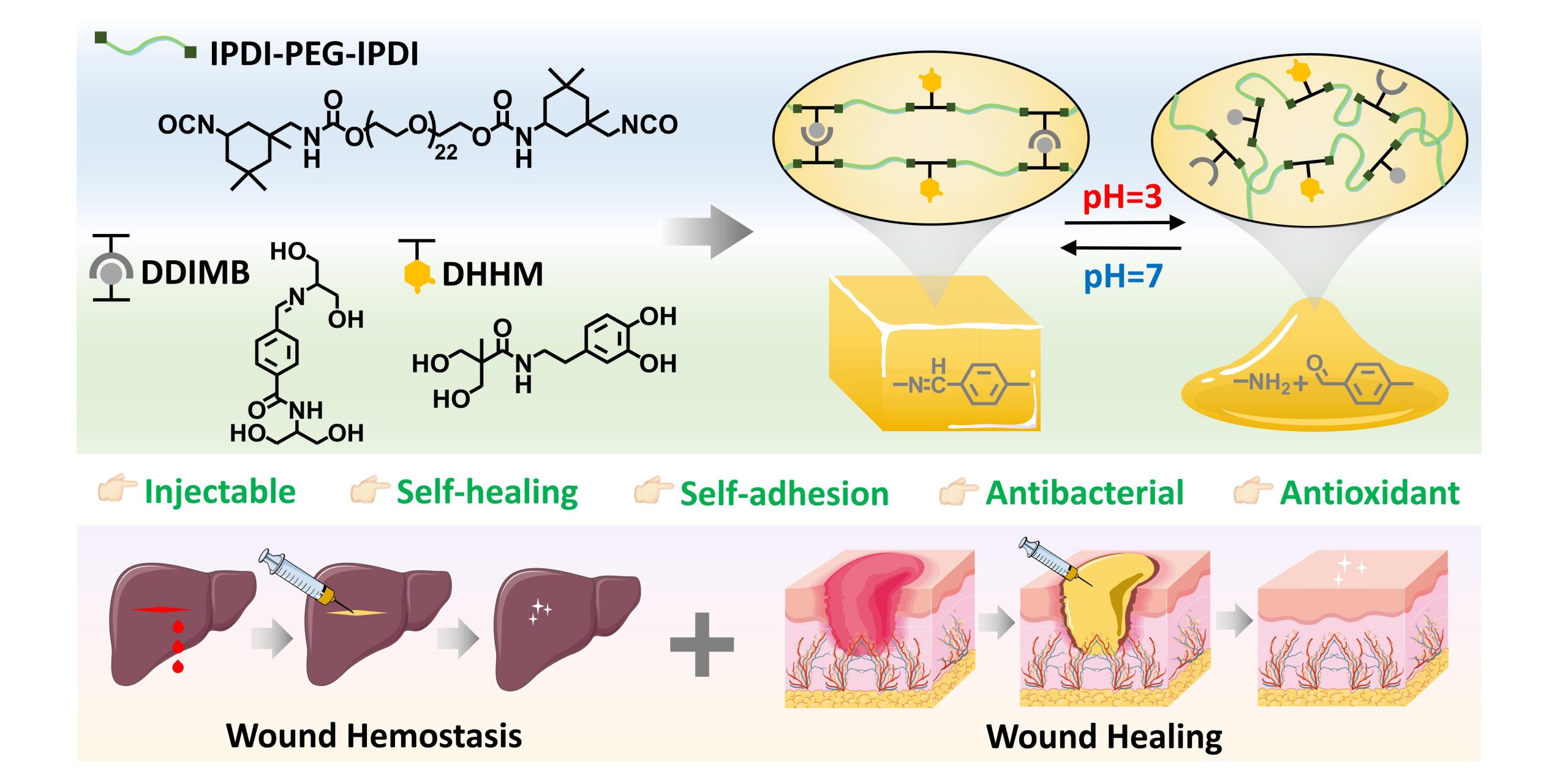Project Description
Abstract:
Injectable hydrogels have been widely studied because of their high adaptability to bleeding wounds. However, due to the contradictory demands for hydrogel network before and after injection, it is still difficult to develop a hemostatic injectable hydrogel with sufficient mechanical properties and convenient operation, while the complex microenvironment of wounds also requires the hydrogel to have multibiological functions besides rapid hemostasis. In this work, a polyurethane (PU)-based hemostatic injectable hydrogel is designed and constructed by introducing a tetrahydroxy compound containing a Schiff base and a dihydroxy compound containing catechol into the network. Thereinto, the Schiff base provides pH responsiveness to realize the switch between the elastic state and viscous state of PU, which is injectable in acidic solution and stable in neutral solution, while the catechol exerts rapid hemostasis, self-healing, tissue adhesion, antibacterial, antioxidant, and promotion of wound healing in the form of side groups without taking part in the cross-linking. Based on these characteristics, the coexistence of mechanical strength, controllable injection, and multibiological functions is realized in a PU-based hydrogel successfully, which may provide a new perspective for the hemostatic injectable hydrogels. [PDF]

